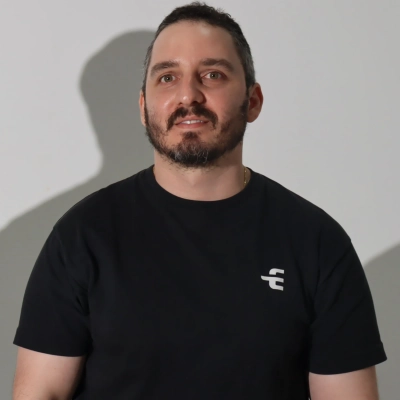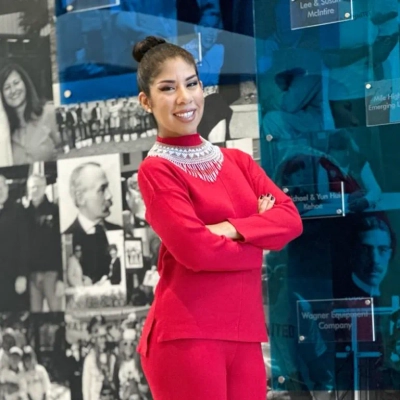How to Build a Brand Community: 25 Content Marketing Strategies for Engagement
Building a loyal brand community requires more than posting content—it demands strategy, consistency, and genuine connection. This article breaks down 25 proven content marketing strategies designed to turn passive audiences into active participants. Drawing on insights from industry experts, these approaches offer actionable tactics for creating engagement that drives lasting relationships.
Create Space Where Audiences Feel Understood
Building a community through content marketing begins with understanding what your audience values and creating a space where they feel understood, supported, and inspired to participate. Community is not formed by publishing content alone. It is formed when people see themselves in your message, experience consistent value, and feel invited to engage in meaningful ways. This requires a blend of education, storytelling, and interaction that goes beyond traditional promotion.
One of the most effective strategies is creating content that answers real questions and reflects real experiences. When your audience feels that your content mirrors their challenges and aspirations, trust grows naturally. Long-form content, such as blogs, webinars, and guides, creates a foundation of expertise. Short-form content across social channels helps spark conversation and reinforce your presence. Both are essential in building a rhythm of communication that keeps your brand top of mind.
Another powerful approach is inviting your audience into the process. Sharing customer stories, spotlighting partners, or featuring insights from your internal team creates a sense of connection. It shows that your brand is not just talking to people, but talking with them. Engagement also increases when you offer interactive opportunities. This can include polls, Q&A sessions, social challenges, or community-driven discussions that invite participation. The more your audience feels like contributors, the more invested they become.
Consistency is another cornerstone of community building. A regular publishing cadence paired with thoughtful distribution ensures your content reaches people where they naturally spend time. Showing up consistently builds credibility and encourages followers to return. Over time, this reliability forms the backbone of a strong and engaged community.
The most successful content communities grow through shared values and ongoing dialogue. When your content is useful, authentic, and intentionally designed to invite participation, engagement becomes a natural outcome. By focusing on connection over promotion, brands can cultivate communities that not only interact but also advocate, share, and stay involved long term.

Educate First, Sell Second for Trust
At Eprezto, our goal with content marketing has always been to educate, engage, and build trust, not just to sell insurance. We realized early on that people in Panama often find insurance confusing or boring, so we focused on building a community around clarity and empowerment.
One of the ways we've done this is by turning our blog and social media channels into places where people can get straightforward answers to everyday questions, from how to renew their car insurance online to how to understand different coverage types. We also make sure our content feels approachable and relatable, adding visuals, videos, and even a bit of humor to make it enjoyable.
Over time, this approach has built real loyalty. People don't just visit our site to buy, they come back to learn, and they share our content because it genuinely helps them. That ongoing engagement has created a sense of community around Eprezto as a helpful, trustworthy brand rather than just another insurance company.

Shift From Broadcasting to Building Belonging
Content marketing builds community when it shifts from broadcasting to belonging. The focus is not only on publishing content but on creating spaces where people feel seen, understood, and valued. Every article, video, or newsletter should help your audience solve something real, reflect their aspirations, or make them feel part of a shared journey. When that intention is consistent, engagement becomes natural rather than forced.
In practice, I have found long-form storytelling and behind-the-scenes content to be powerful tools. Sharing experiences, challenges, and lessons learned makes your brand human. It also signals that you are not just selling but contributing to a collective learning space. Interactive formats such as live sessions, Q&A posts, or user spotlights can deepen this connection because they turn passive readers into active participants.
Consistency matters most. When your message, tone, and intent remain steady across platforms, people begin to trust your brand voice. That trust slowly turns into dialogue, collaboration, and advocacy, the core of any strong community.

Connect Articles, Emails, and Social Posts
We embrace a content ecosystem where articles, email campaigns and social posts work together to grow community. The process might begin with an article about AI in workplace learning, followed by an email inviting readers to a related webinar, then a social thread asking their views. This flow encourages readers to explore topics more deeply and engage. It also helps us create a connected experience where each channel supports long-term interest.
For example, we recently covered an insightful topic and then invited responses from our readers. The feedback inspired new conversations and gave us valuable insights into their learning needs. By connecting content across different formats, we ensure that engagement continues even after the first interaction. This layered approach keeps our audience involved, nurtures curiosity, and strengthens our community through ongoing dialogue.
Encourage Participation With Interactive Tools
Content marketing is at the heart of creating organic discovery and converting visitors into a true community driven by utility and engagement. We have created a strategy to go beyond publishing static blog articles and instead create content that encourages active participation from our users. Some examples of this type of content are: highly accurate diagnosis tools, calculators, and comprehensive, interactive guides. These types of content address the immediate needs of our users (utility), but they also provide an opportunity to capture user-generated content (UGC) and specific feedback. In addition to creating these types of content, we also create an environment for users to interact through providing tools for managing user comments and forums, asking follow-up questions, and recognizing our users as subject matter experts. Overall, this method allows our brand to serve as an active and trusted partner in the continuous dialogue between brand and user regarding problem resolution, not just as a source of knowledge.

Spark Dialogue With Data-Driven Thought Leadership
Content marketing becomes far more powerful when it stops acting as a broadcast channel and starts functioning as a catalyst for shared learning. At Edstellar, community growth has consistently taken shape around content that sparks dialogue rather than one-way consumption. Insights supported by data tend to create this effect; for example, research from Deloitte shows that nearly 70% of professionals engage more deeply with brands that offer practical, problem-solving knowledge. Long-form thought leadership pieces, workshop-style video snippets, and real stories from L&D leaders often trigger meaningful conversation because they make professionals feel seen in their daily challenges.
Consistent participation in these discussions is equally important. Commenting on emerging trends, reshaping audience questions into new content, and highlighting diverse industry perspectives helps transform passive readers into an active learning circle. Platforms such as LinkedIn have been especially influential, and posts that ask for opinions or invite micro-experiences tend to generate up to 2-3x higher engagement, based on internal observations. When content acts as a doorway for professionals to share insights rather than just absorb them, community engagement begins to grow naturally and sustainably.
Reward Deeper Interaction With Exclusive Access
"Our team use content marketing to build community by creating exclusive access tiers that reward engagement with deeper insights and direct interaction opportunities. Our content strategy includes public educational content that anyone can access, subscriber-only analysis and frameworks, and an invitation-only community for our most engaged members where they get direct access to our team and each other for strategic discussions.
The strategy driving strongest engagement has been our monthly ""office hours"" video sessions where community members can ask questions about their specific situations and get personalized advice in a group setting. These sessions create accountability and ongoing relationships because participants see each other month over month, learn from each other's questions, and build familiarity with our team beyond transactional service relationships. We record sessions and make edited versions available to all community members, which creates content value while making live participants feel their engagement generates resources for the broader community.
What works about this tiered approach is creating clear value progression that rewards deeper engagement while keeping entry barriers low. Anyone can benefit from our public content, but those who actively participate and contribute get access to increasingly valuable resources and relationships. This structure naturally encourages interaction because the most valuable community benefits (direct expert access, peer networking, exclusive insights) require active participation rather than passive content consumption. We've seen community members collaborate on projects, refer business to each other, and form genuine professional relationships that extend beyond our brand, which creates stickiness that content alone couldn't achieve."

Develop Your Core Circle Before Expanding
The first step of community development is to develop your "core circle" which may be around five to ten people who regularly interact with your posts. I believe most organizations start here, however many do not and instead try to expand their reach and scope prior to developing a sustainable "community."
What I recommend is to begin by sending DMs to those who are engaging with your posts, ask for their input on how to best meet their needs and establish a small, exclusive environment (private group) that will allow them to have meaningful interactions with each other. The goal is to avoid spamming the users while providing regular weekly interaction opportunities where you provide updates and value through sharing information with them. Once you have established your "core circle," you can begin to develop additional community-building resources through the use of value-based content and social media platforms based upon customer pain points identified from customer service requests and/or surveys.
Agents often make the error of posting on all of the available social media platforms simultaneously rather than establishing a connection with an audience on one specific platform; therefore, the agent has developed an opportunity to establish a relationship with their customers and create a community of loyal followers who will be engaged on the selected social media platform and respond to comments and inquiries as if their response was of great importance.

Make Your Audience Part of the Process
I use content to build community by making the audience part of the process, not just consumers of it. The most effective strategy has been publishing content that reflects real questions, workflows, and challenges pulled directly from user conversations. When people see their reality mirrored, they respond.
We also share work in progress instead of polished announcements. Early previews, draft ideas, and behind-the-scenes thinking invite people to comment, correct, and contribute. That builds trust and gives them a stake in what comes next.
The other strategy that works well is spotlighting users. Featuring their demos, use cases, or insights turns them into contributors, not spectators. Once people feel seen, they start engaging on their own.
Treat Each Post as Discussion Starter
Engagement jumped about 3X once I stopped chasing traffic and started focusing on conversations. I use content marketing to build community by treating each post like a discussion starter instead of a broadcast. So people can share their thoughts and feel heard, not just read updates.
Most of my attention goes to LinkedIn posts and email breakdowns because that's where I can go deeper on real campaign examples. I share what worked, what tanked, and what I'd change next time. People connect more with that kind of honesty. Those posts often turn into comment threads or DM chats that lead to new work or ongoing exchanges. It's slower growth but the people who follow stick around.
Short videos help too. I record quick clips walking through a small tweak I made in a Google Ads campaign and show the outcome. I usually end by asking for other takes on it so the conversation keeps moving. That back-and-forth keeps engagement up and turns casual viewers into regulars.
Transparency drives everything for me because sharing real numbers, process notes, and honest takes builds trust faster than polished content ever could. People stay because they can see the work behind the results.
--
Josiah Roche
Fractional CMO, JRR Marketing
https://josiahroche.co/
https://www.linkedin.com/in/josiahroche

Feature Customer Stories for Genuine Connection
My role involves not just product development but also building a voice for our brand. A strong brand voice helps people connect with what we create and why we create it. Through content marketing, we focus on making our audience feel seen and valued, which turns followers into loyal supporters. When customers share their experiences, it becomes more than marketing; it becomes a reflection of shared values and genuine connection.
We encourage customers to tell their stories using our products and feature selected ones in our "Wild Beauty Journal." For instance, when we invited supporters to share how they use our travel skincare set, the responses inspired meaningful conversations. This kind of interaction builds trust and helps people feel part of something bigger. Creating a two-way flow of content ensures our marketing feels inclusive, natural and deeply human.

Sell Operational Competence, Not Just Products
We use content marketing to build a community around Co-Wear by completely rejecting the idea of selling products and focusing entirely on selling operational competence. Our content isn't lifestyle fluff; it's designed to attract customers who value the same things we do: durability, quality, and transparent business practices.
The most effective strategy we use is the "Problem-Solution Competence Loop." We create content that highlights a significant industry problem—like a common flaw in apparel manufacturing—and then document the messy, technical process Co-Wear used to solve it. This fosters engagement because we are not asking them to buy; we are giving them verifiable, useful, high-value information.
This approach works because it transforms the audience from passive consumers into active, informed enthusiasts who trust our judgment. The community we build is bonded by a shared appreciation for quality and competence, not just a shared interest in a brand. This strategy ensures the interaction is about the substance of our product, which is the only way to build lasting loyalty.

Show Real Moments With Steady Consistency
Building a community through content works best when the tone feels honest and steady, the same way we try to create stability for the kids at Sunny Glen Children's Home. People gather around a brand when they sense a heartbeat behind the words, not a performance. I focus on sharing stories that show real moments instead of polished highlights. It mirrors how our kids open up when they see adults showing up consistently, without trying to impress them. Content that highlights purpose, steady progress, and the people behind the work tends to draw others in more naturally than big announcements ever could.
Engagement grows strongest when the audience can see themselves inside the story. I often end posts with a small prompt or a gentle question, something that invites a reply without demanding it. It works the same way group conversations unfold at Sunny Glen, where kids participate more when they feel the room is safe. I also keep a predictable rhythm to the content. Weekly updates, behind the scenes moments, or short reflections build trust over time. Once people feel that consistency, they start talking to each other, not just to the brand. That is when community really forms. It mirrors life at Sunny Glen, where connection grows the moment people realize they are part of something steady enough to hold them.

Turn Useful Ideas Into Daily Habits
I'm Lachlan Brown, mindfulness expert and co-founder of The Considered Man. My job is to turn useful ideas into habits people can live with, then invite readers to build those habits with us.
Here is what works for us.
We write in reader language and always give a next step people can try that day. Each evergreen guide ends with a single question and an invitation to reply. Those replies shape the next piece and the most common pattern becomes a short live session. I keep these to 20 minutes, teach one tool, and leave space for one question. The recordings become newsletter lessons, then a tidy chapter in our courses, and sometimes a seed for a new section in my book, Hidden Secrets of Buddhism. The loop is simple. Article to inbox to live room to product to story back in the wild.
I've noticed that two formats drive engagement so far:
1) A weekly email that opens with a two sentence story, then one practice you can do in two minutes, then one invitation to hit reply. I answer as many as I can and feature reader lines in the next issue with permission.
2) A small "reader panels" on Zoom. Ten people, cameras on, a single topic like sleep or conflict repair, and one worksheet. We ask what worked a week later and publish the anonymized patterns so the community sees itself learning in public.
On social, we post at odd times to avoid the half-hour pileups and pair each post with one honest question. The metric that matters is replies per thousand, not likes.
Partnerships help without social noise. We trade guest spots with adjacent newsletters and do creator call-ins for our live sessions. One hour with a neighboring audience grows the right kind of reader, the one who shows up and tries things.
As a reuslt, now we have email sign-ups per 1,000 pageviews climbed from about 6 to about 24 after we added the question at the end of posts and the live follow-ups. More important, the inbox is full of reader stories we can build on, which keeps the community centered on practice, not performance.
Thanks for considering my insights!
Cheers,
Lachlan Brown
Mindfulness Expert | Co-founder, The Considered Man
https://theconsideredman.org/
My book 'Hidden Secrets of Buddhism': https://www.amazon.com/dp/B0BD15Q9WF/

Build Through Connection, Not Just Content
For me, community isn't built through content — it's built through connection. Content is just the bridge that allows people to feel seen, understood, and safe enough to engage. The key is to create from regulation, not performance. When your energy is calm, present, and genuine, people pick up on that and respond in kind.
My strategy centers around sharing ideas that invite reflection rather than reaction. I ask questions that help people slow down, notice what's happening in their own experience, and connect it back to something universal. That approach turns passive readers into active participants.
I've also found consistency in tone more powerful than consistency in posting. When people can feel your steadiness — that you're not just selling but truly serving — engagement becomes organic. Community grows not from algorithms, but from safety, resonance, and shared humanity.

Let Your Brand Personality Lead Authentically
For me, content marketing works best when the content actually sounds like the brand. If your posts consistently reflect your brand's personality, whether that's professional, straightforward, or a little sarcastic, you naturally attract people who resonate with it. The biggest engagement booster I've seen is humor, as long as it fits the brand. When it feels authentic, it breaks down barriers, makes your message more memorable, and gives people something they actually want to interact with.
The strategies that work well are the ones that blend value with personality. Share something useful, but deliver it in a way that makes people smile or think, "Yeah, that feels like them." When your humor is intentional and on-brand, people are more likely to comment, share, and jump into the conversation.
And engagement really picks up when the audience feels like they're part of the joke or the moment. Asking for reactions, running fun polls, or playing into relatable industry humor encourages people to participate instead of just scroll past.
At the end of the day, your content should be an extension of your brand, keep it genuine, and don't be afraid to let your personality lead. That's where real community starts to form.
Provoke Conversations, Not Polished Broadcasts
By focusing on content that provokes conversation rather than polished broadcasts, I use content marketing to foster a sense of community. I consider content to be more of an open thread than a final product. People feel more at ease sharing their own experiences when you share frameworks, lessons learned, or even partially developed ideas. When individuals perceive that their viewpoint is not only accepted but also incorporated into the brand's continuous story, the community expands.
Transparency, repeatable formats, and co-creation are the main tactics that have continuously increased engagement. People are drawn to brands that are open about what is working and what is still being tested, so transparency is important. Weekly breakdowns and "inside the playbook" posts are examples of repeatable formats that provide audiences with a rhythm that facilitates participation. However, co-creation is the most effective tactic. Content becomes a collaborative problem-solving loop when community members are invited to share data patterns they are observing, offer insights, or answer strategic questions. People feel like stakeholders instead of spectators, which makes engagement sustainable.

Approach Content as Invitation, Not Broadcast
By approaching content as an invitation rather than a broadcast, I use content marketing to foster a sense of community. I concentrate on creating content that allows for participation because people are more engaged when they feel that the brand is talking to them rather than at them. A sense of shared problem-solving is facilitated by thought pieces that reveal my decision-making process, candid reflections about difficulties, and useful frameworks. When people recognize themselves in the discussions you are initiating, the community grows at its fastest rate.
Rhythm, accessibility, and reciprocity are the tactics that consistently promote engagement. Recurring formats, such as weekly insights or monthly founder notes, provide people with predictable touchpoints because a community needs something to congregate around. Simplifying difficult subjects to make them easier to discuss rather than admire from a distance is the first step toward accessibility. The most underappreciated lever is reciprocity. I make it a point to reply, incorporate comments from the audience into upcoming posts, and give community members the freedom to start their own discussions. People naturally lean in more when they receive that kind of acknowledgment.

Engineer Conversations That Elevate Your Industry
At Peak 10 Marketing, we use content marketing to create alignment and connection, not just awareness.
Every blog, video, or case study starts with segmentation; understanding what specific audiences care about most. We build topic clusters around those shared challenges, then expand them into multi-channel campaigns that include video insights, social dialogue, and press visibility.
That consistency builds familiarity and trust. Over time, our audience begins contributing their own experiences and results, turning followers into advocates. It's not just about publishing content, it's about engineering conversations that help our entire industry grow.

Focus on Hyperlocal Connection and Milestones
At Aquatots, our content marketing focuses on hyperlocal connection. We don't just share swimming lesson photos. We also highlight family milestones, offer water safety tips for Canberra's seasons, and provide updates on local events. By keeping everything community-first and close to home, parents feel part of something bigger than a swim school. The best engagement happens when our content highlights kids' progress or showcases local partnerships. It's about showing that Aquatots isn't just teaching swimming. We're building a safer, stronger community together.

Start With Clear, Relatable Brand Identity
We use content marketing to build community by starting with a clear, relatable identity. We highlight what we stand for, the values behind the product or service, and the experience we're trying to create. That clarity attracts people who recognise themselves in the story and want to be part of the company's mission.
From there, we build a two way content system. We publish helpful, educational content around core ideas and then actively involve the audience in shaping future topics through questions, polls, and feedback loops. This allows the community to feel like co contributors instead of just visitors.
Storytelling is a big part of this. We share the reasoning, challenges, process, and even sometimes the failures. When people see the journey, they start to root for it. It humanises the brand and encourages people to join your community as they feel they're growing it and alongside it.
Community also grows when the spotlight is shared. We highlight customer stories, user generated content, and small wins from within the audience members. This gives people a sense of belonging when they see themselves reflected in the brand. It reinforced that community is about us, not just company profits.
To foster engagement, we intentionally peak interest and start conversations through highly specific questions, contradictory opinions, and weekly events like live Q&A's, so people schedule and commit their time and attention to your brand.
Engagement is a two way obligation, so your response rate must be high. Reply to all comments, jump into conversations outside your posts, and recognise those who contribute. Over time, the engagement will increase as your audience know they'll be seen.
Lastly, bringing in other influencers or partners makes the community richer and more dynamic.
Overall, the foundation is to stand for something, create shared ownership, show the journey, make people feel seen, and keep showing up for your audience. That's how content turns into community.

Structure Evergreen Clusters Around Customer Pain
Content marketing has been instrumental in establishing an engaged community around the brands we manage under a wide range of marketing campaigns. We found that customers aren't just searching for our products or services, they're looking for how to use them effectively and what they need to know beyond the initial delivery. In essence, they seek solutions that enable them to achieve tangible results - NOW.
To meet that need, we built structured clusters of evergreen content around recurring customer pain points like guides, tutorials, troubleshooting articles, and use-case stories. These clusters have remained strong performers for years, continually attracting traffic and helping customers self-educate while reinforcing our authority in the space.
We've also taken a transparent engagement approach by addressing questions publicly through forums, community discussions, and visible support threads. This not only humanises the brand but also drastically reduces long-term support costs, as customers can find answers without one-to-one intervention.
With the advent of AI, this content segment has become even more valuable. AI-powered search and summarisation tools now allow customers (and even internal teams) to instantly extract insights from years of forum discussions and support tickets. The recent acquisition of Reddit by Google underscores this shift that platforms that foster authentic, user-driven content and engagement are becoming core sources of trusted, AI-ready knowledge.
Ultimately, our strategy turns every piece of helpful content into both a community asset and a data-rich knowledge base that continuously attracts, educates, and converts.

Reflect Everyday Problems Without Judgment
At Beacon Administrative Consulting, content marketing turns into community building once the focus shifts from broadcasting expertise to creating a shared language around the everyday problems our clients face. We anchor most of our pieces in the small operational moments that people rarely admit are overwhelming. When we publish an article about unclear approval chains or inconsistent financial workflows, readers recognize themselves in the example and start responding as if they are part of an ongoing conversation rather than an audience being talked at. That recognition becomes the glue. People return because the content reflects their world without judgment and gives them a clearer way to talk about what they experience inside their organizations.
We keep the rhythm steady by posting insights that come directly from our day-to-day work, then inviting readers to share how the issue shows up in their settings. Those comments and messages guide the next pieces we write, which makes the community feel co-created rather than curated. Over time, the audience stops seeing our content as marketing and starts treating it as a practical toolkit that belongs to all of us. That shift builds loyalty faster than any campaign because people gather around ideas that help them work with more confidence and less friction.

Add Expertise and Distribute Across Channels
As a digital marketer, I've experimented with several strategies to build a strong community around a brand.
Building a community through content marketing starts with shifting from simply publishing content to creating meaningful conversations.
One of the most effective strategies is to add expertise to your content. Research deeply about the topic, gather insights from industry experts, and mention or quote them in your blogs. This not only increases credibility but also helps readers trust your content and engage with it.
Next, focus on multi-channel distribution. Share your content in different formats like newsletters, LinkedIn posts, Medium articles, and personalized email templates. Reaching your audience through multiple touchpoints reinforces your message and expands visibility.
When done consistently, these practices help improve brand awareness, foster community trust, and steadily increase organic website traffic.
In short, community-driven content marketing isn't just about visibility, but it's about authenticity, expertise, and conversation.

Test Daily, Scale Only What Works
I'm Chris Rodgers, CEO & Founder at CSP Agency. Here's tactical, hard-earned advice on using content marketing to build real communities for clients. This isn't theory—it's workflows driving search + social engagement.
1. 'Day trade attention': run many tests, scale only what works
The most powerful community-building technique I've seen is publishing multiple pieces of content per day - each testing a different angle - and promoting only the ones that actually excite your audience.
For one mid-market B2B SaaS client, this approach increased community engagement from ~15 to ~90 interactions per day in under two months. Before, they produced one polished campaign a month. After, their team pushed 7-12 posts per day across LinkedIn, YouTube Shorts, and X.
This works because volume creates micro-experiments. The 'day trade attention' idea mirrors active investing: frequent, low-cost tests reveal breakthroughs fast. When one video hits 3,000 views while others get 200, you instantly know where to spend. Turning on even $25/day in paid promotion can turn 3,000 views into 30,000. Meanwhile, you simply stop promoting the underperformers. Engagement only goes one direction: up.
2. Use paid social not just for reach, but to define your community
Paid social is typically used for reach or acquisition, but it's also perfect for clarifying who your community actually is.
For a D2C eCommerce brand, we amplified their top organic posts using Instagram and Facebook ads targeted by age, location, and interests. This showed us which segments engaged hardest, revealing our real audience wasn't 18-24, but 28-34. By pivoting content and community strategy toward this older group, we tripled engagement in three months and unlocked organic advocacy + UGC.
Granular paid-social scanning is an underused way to find your community "core." Set small weekly budgets ($10-$30) to probe new audiences, introduce fresh ideas, and rapidly converge on the content that builds a vibrant, self-propelling community.
Want to build a lively brand community? Feed the algorithms.






